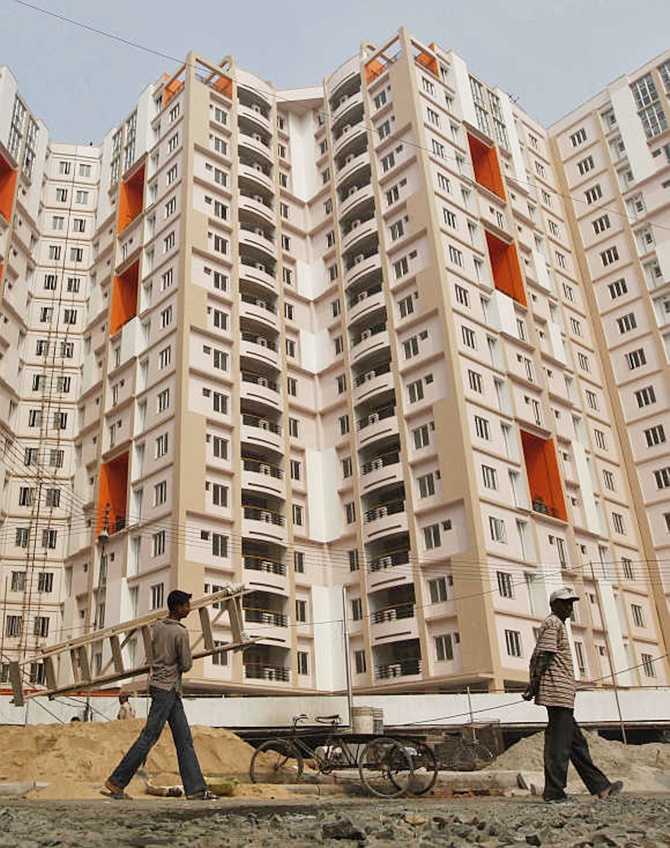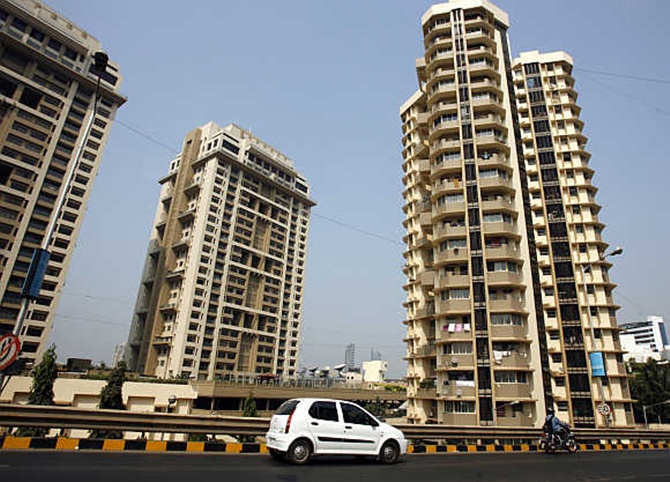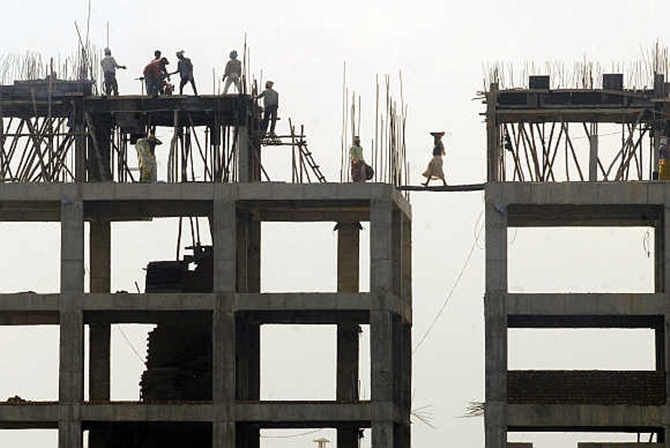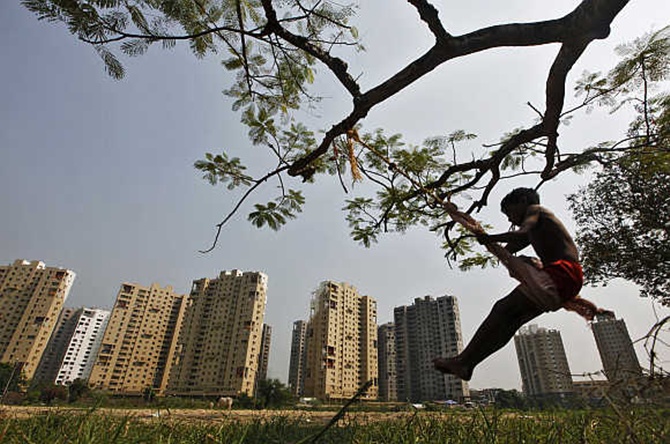
As stricter RBI guidelines, rising inventory and the slowing economy leave developers reeling, buyers are bargaining harder to strike a deal.
Drop in residential property prices may have been a buyer’s dream till recently, but now it is as real as it can get.
Although the real estate industry is still somewhat in denial, a recent survey by the National Housing Bank (NHB) has thrown up transaction data from banks and housing finance companies to establish that property prices have indeed dropped in most parts of the country.
NHB Chairman and Managing Director RV Verma tells Business Standard that the study, according to which 22 out of 26 cities have seen downward movement in residential property prices in the period from April to June compared to the previous quarter, is scientific as it’s based on live transactions.
...

The industry is dismissive. “Who says prices are down? No such thing (has happened) in the primary market,” counters an analyst.
Indicating that the Diwali rush is round the corner, a broker says many launches and deliveries have been planned around that time.
But, if Diwali is what the real estate industry has been hinging its hopes on to bring about a revival, the window of opportunity has suddenly shrunk.
A large number of offers that have been in the making for months and are now ready to be lined up for the festival season must be reviewed and redone.
That’s because the Reserve Bank of India struck down the 80-20 subvention scheme last week in a move that is being viewed as a spoiler for the sector which is already down. In the 80-20 scheme, the buyer pays only 20 per cent of a property’s cost upfront and until the house is handed over to the buyer, the builder pays the equated monthly installments to the bank.
...

Deciding time
For sure, Diwali, which makes up for one-third of the total residential unit sales, will be a litmus test for the industry battling the slowdown.
Will there be a property-buying spree over the next two months, lifting the demand and clearing the piled up inventory; or will it be more of the same wait-and-watch for the economy to revive before buyers loosen their purse-strings? Nobody quite knows the answer yet.
But there are enough pointers to the answer. Sanjay Sharma, managing director, Qubrex, a real estate consultancy, draws attention to two kinds of prices - asking price and transaction price. The asking price or the published rate may be holding on, while the amount at which a transaction is completed could be much lower, according to Sharma.
“Nobody is paying the asking price. And only those developers compromising on price are selling now,” he says in a telling admission of the state of affairs in the sector. The secondary market has experienced a very definite fall in prices, Sharma points out.
“Around Diwali, seeing the price levels of new launches, we will get a sense of where the real estate market is headed,” Shweta Jain, executive director (residential services), Cushman & Wakefield, says.
However, the performance and potential of the sector can be fully assessed only after the 2014 general elections. “We will see short-term spurt of activity during Diwali but the true colour of the realty market will be visible only after elections,” says Jain.
Sudhir Pai, business head, Magicbricks, a real estate portal, also believes Diwali could be a game changer for the industry. “We will get to know which way the realty sector will move after Diwali.”
...

A buyer’s market
Meanwhile, the recent NHB study shows that the 22 cities, where home prices dropped include Delhi, Mumbai, Pune, Bangalore and Chennai.
This is the first time in recent years that residential unit prices have fallen in so many big cities, an indicator perhaps that buyers who have been in a wait-and-watch mode may use the festival season of Diwali to strike a bargain with developers.
“There is room for some more price correction,” says NHB’s Verma. “We have seen a price decline across cities - it was due for some time. It shows developers are now prepared to take some cuts in their margins, despite a rise in input cost. This will enable them to clear their huge inventory, have liquidity and increase demand,” he says.
Verma has a different take on Diwali or festive season sales. “If prices are subdued during the festive season, it will be a good sign as it would mean the inventory’s getting cleared.” There’s no option for builders, but to bring in a price correction, he says.
A broker argues, “It is price rationalisation, not price correction, and that too only in a few micro-markets.” The activity level is down, but not price, though there is scope for negotiation if the buyer is strong, he says.
...

In markets like NCR (National Capital Region) and Mumbai, official rates may not reflect the downtrend, but backroom negotiations are slashing prices, a Gurgaon-based broker admits. “The more you bargain, the higher the chances of price cut, as developers are desperate to sell their stock,” he adds.
Another broker based in Mumbai points out that price correction has been limited to only a few pockets such as Lower Parel. Also, prices have fallen in secondary markets where there is a lack of infrastructure such as the area around Dwarka Expressway in Gurgaon. Otherwise, project launches carry on at competitive prices.
Jain of Cushman & Wakefield says, “In the near- to medium-term, the market will be stable and we do not see any rise in prices.” After all, investors are wary of the low morale in realty. “Investors are exiting due to uncertainty and volatility, while Indian real estate is turning into more of an end-user market,” an analyst observes.
To keep consumers hooked, developers have been offering freebies ranging from holiday trips to Singapore to gold coins and until recently the 80-20 subvention scheme for 400-500 projects across the country.
...

When RBI banned such 80-20 and 75-25 subvention schemes recently, industry screamed “injustice”. According to Navin Raheja, president, Naredco, a real estate association,
“The decision will have a negative impact on real estate.” Pointing out that the facility is given to only eligible individuals after conducting due diligence by banks, Raheja thinks this decision would create more problems for the real estate sector which is already struggling.
Due to the slowdown, at the end of March this year, the inventory level in NCR had risen to 31 months from 15 months at the end of March 2010. During this period, the inventory level in the Mumbai Metropolitan Region rose from 17 months to 40 months.
For Hyderabad, it reached 49 months from 23 months, according to data from real estate research firm Liases Foras. Inventory denotes the number of months required to clear the stock at the existing absorption rate. An efficient market maintains an inventory level of eight-10 months.